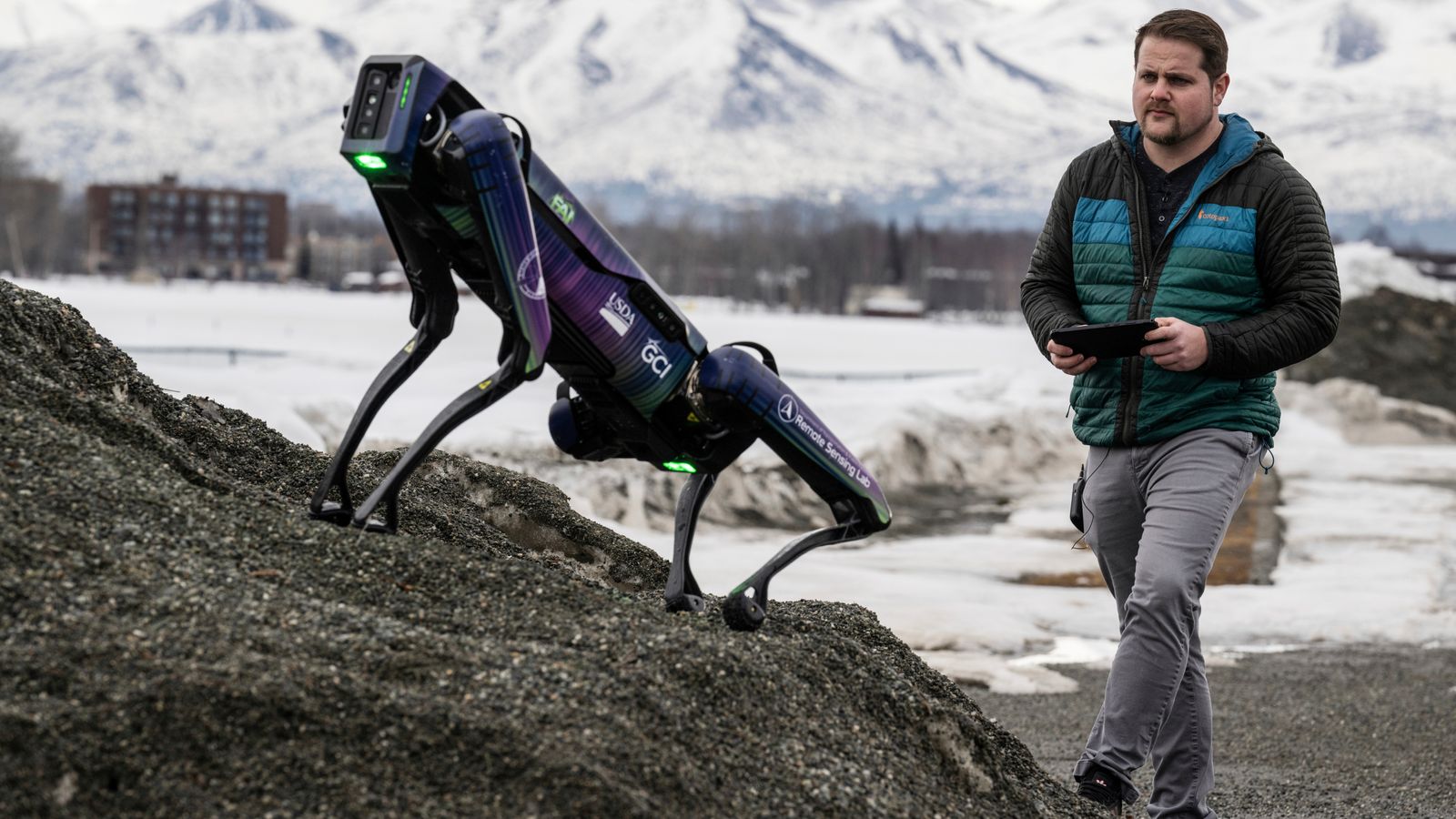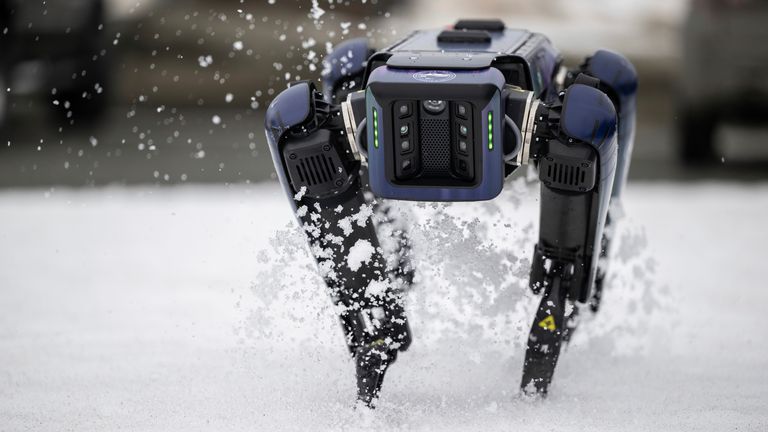A headless robot about the size of a labrador will be camouflaged as a coyote to ward off migratory birds and other wildlife at Alaska’s second largest airport.
The Alaska Department of Transportation and Public Facilities said it will be based at the Fairbanks airport to “enhance and augment safety and operations”.
Images have been released showing the robot – named Aurora – climbing rocks, going up stairs and doing something akin to dancing while flashing green lights.
Those dancing skills will be put to use during the migratory bird season when Aurora will imitate predator-like movements to keep birds and other wildlife from settling near plane infields.
Ryan Marlow, a programme manager with the transportation department said: “The sole purpose of this is to act as a predator and allow for us to invoke that response in wildlife without having to use other means.”
The plan is to have Aurora patrol an outdoor area near the runway every hour in an attempt to prevent harmful encounters between planes and wildlife.
It can be disguised as a coyote or a fox by changing out replaceable panels.
The idea of using a robot came after officials rejected a plan to use flying drones spraying a repellent including grape juice.
Previous deterrent efforts have included officials releasing pigs at a lake near the Anchorage airport in the 1990s, with the hope they would eat waterfowl eggs near plane landing areas.
The test period in Fairbanks will also see how effective of a deterrent Aurora would be with larger animals and to see how moose and bears would respond to the robot..
Last year, there were 92 animal strikes near airports across Alaska, including 10 in Fairbanks, according to an Federal Aviation Administration database.
Most strikes resulted in no damage to the aircraft, but Marlow said the encounters can be expensive and dangerous in the rare instance when a bird is sucked into an engine, potentially causing a crash.
An AWACS jet crashed in 1995 when it hit a flock of geese, killing 24 people at Elmendorf Air Force Base in Anchorage.


